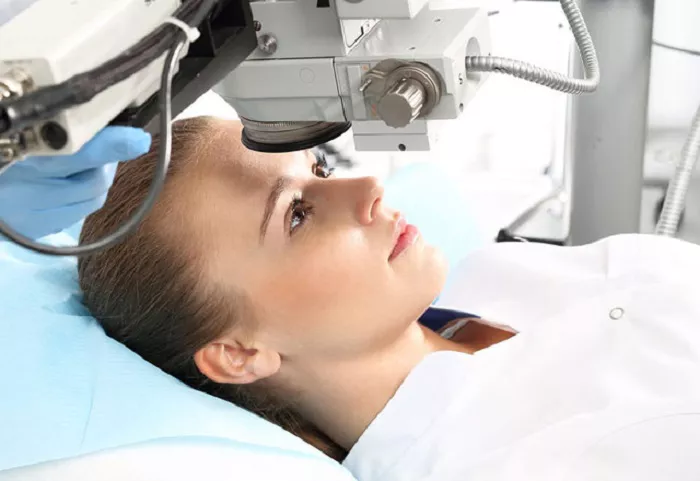Astigmatism is a common vision condition caused by an irregularly shaped cornea or lens, leading to blurred or distorted vision. Laser eye surgery offers effective solutions to correct astigmatism, reducing or eliminating the need for glasses or contact lenses. This article explores various laser treatments available for astigmatism, helping you understand the options and determine the best choice for your needs.
What Is Astigmatism?
Astigmatism occurs when the cornea or lens has an uneven curvature, causing light to focus on multiple points in the eye rather than a single point on the retina. This results in blurred or distorted vision at all distances. Symptoms may include headaches, eye strain, and difficulty seeing at night. Astigmatism can occur alongside nearsightedness (myopia) or farsightedness (hyperopia).
Diagnosing Astigmatism
An eye care professional can diagnose astigmatism through a comprehensive eye exam, which includes tests to measure the curvature of the cornea and the way your eyes focus light. Regular eye exams are essential for detecting astigmatism and determining the appropriate treatment.
Laser Treatments for Astigmatism
Several laser eye surgery options are available to correct astigmatism:
1. LASIK (Laser-Assisted In Situ Keratomileusis)
LASIK is the most commonly performed laser eye surgery for astigmatism. The procedure involves creating a thin flap in the cornea, then reshaping the underlying corneal tissue with an excimer laser to correct the irregular curvature. LASIK offers quick recovery times, with many patients experiencing improved vision within 24 to 48 hours. It is effective for a range of astigmatism levels.
2. PRK (Photorefractive Keratectomy)
PRK is suitable for patients with thinner corneas or those who may not qualify for LASIK. Instead of creating a flap, the surgeon removes the outer layer of the cornea and reshapes the underlying tissue with a laser. The corneal surface regenerates over time, resulting in improved vision. PRK generally requires a longer recovery period than LASIK.
3. SMILE (Small Incision Lenticule Extraction)
SMILE is a minimally invasive procedure that uses a femtosecond laser to create a small piece of corneal tissue (lenticule), which is then removed through a minor incision. This reshapes the cornea to correct astigmatism. SMILE is particularly suitable for patients with mild to moderate astigmatism and offers the advantage of preserving corneal strength. It also tends to result in less post-operative dryness compared to LASIK.
4. Topography-Guided LASIK
Topography-guided LASIK utilizes detailed maps of the cornea’s surface to customize the laser treatment, targeting specific areas of distortion. This method is particularly beneficial for individuals with irregular astigmatism or those who have previously undergone unsuccessful refractive surgeries. It offers improved clarity and reduced visual disturbances.
Comparing Laser Treatments
| Treatment | Suitable For | Recovery Time | Advantages | Considerations |
|---|---|---|---|---|
| LASIK | Most patients with astigmatism | 1–2 days | Quick recovery, effective for various levels | Risk of flap complications, dry eyes |
| PRK | Patients with thin corneas | Several days | No flap creation, suitable for thin corneas | Longer recovery, initial discomfort |
| SMILE | Mild to moderate astigmatism | Few days | Minimally invasive, preserves corneal strength | Not suitable for high astigmatism |
| Topography-Guided | Irregular astigmatism, previous surgeries | 1–2 days | Customized treatment, improved clarity | Availability may be limited |
Choosing the Best Treatment
The best laser treatment for astigmatism depends on various factors, including the severity of your astigmatism, corneal thickness, lifestyle, and personal preferences. Consulting with an experienced ophthalmologist is essential to determine the most suitable option for your specific needs.
Conclusion
Laser eye surgery offers effective solutions for correcting astigmatism, improving vision, and reducing dependence on corrective lenses. By understanding the different treatment options—LASIK, PRK, SMILE, and topography-guided LASIK—you can make an informed decision in consultation with your eye care professional. Regular eye exams and discussions with your doctor will ensure the best outcome for your vision health.
Related topics:


